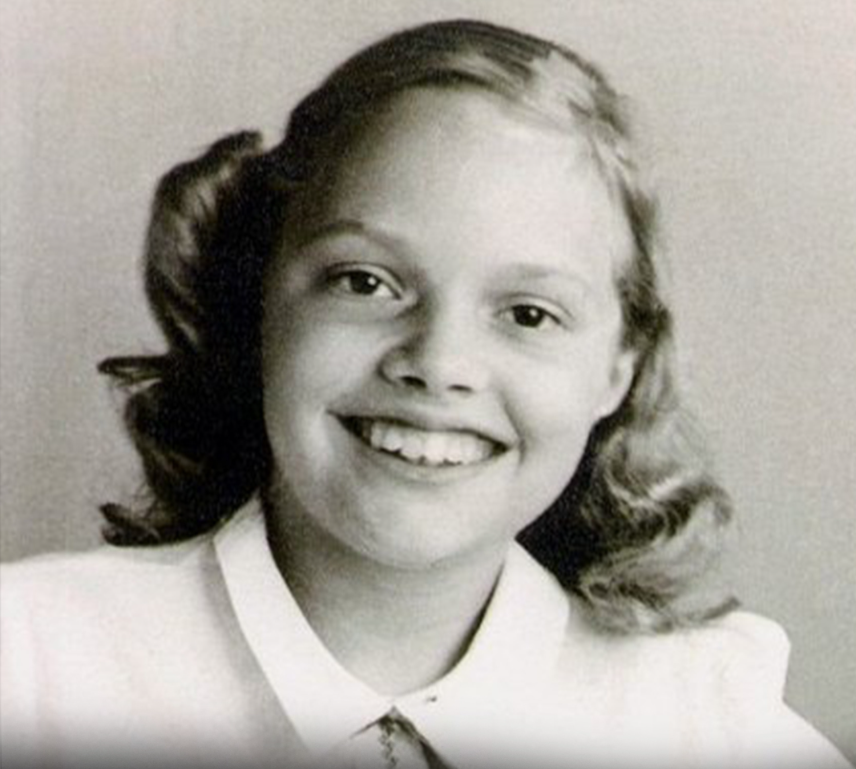At first glance, she looked like any other little girl—bright eyes, blonde hair, a shy smile. Yet behind that innocent face lay a childhood filled with pain, neglect, and secrets dark enough to twist anyone’s soul. Her mother disappeared in 1956 in a quiet Michigan town, leaving her and her brother behind. The mother later said it was probably “the biggest mistake” she had ever made. Around the same time, her 23-year-old father, already behind bars for kidnapping and the assault of a young girl, took his own life in prison. From then on, the children were in the care of their grandparents. But the grandparents’ home became another nightmare: the grandmother struggled with alcoholism, and the grandfather was described as violent, even predatory. “I should have adopted them to strangers. We in our family suffered a form of child abuse,” the girl’s mother later told The Tampa Bay Times.
Became wards of the state: By the age of 13, she was pregnant after being assaulted; some whispered that her own brother might have fathered the child. Others claimed she was allegedly assaulted by a friend of her grandfather. Family members later told The Tampa Bay Times that no one believed her at the time, and no police report was filed. She gave the baby up for adoption, hoping to give him a better life than the one she’d been handed.
Soon after, tragedy struck again: her grandmother died, described by her as a “really clean and decent” woman who didn’t drink or swear. Soon after that, her grandfather took his own life. She and her brother, Keith, became wards of the state. By age 11, she began engaging in sexual activity at school in exchange for cigarettes, drugs, and food. Alone and desperate, the teenage girl then dropped out of school and began living on the streets, surviving through petty crime and prostitution.
Over the next decade, she racked up arrests for theft, assault, and disorderly conduct—the kind of rap sheet that grew longer with each passing year. By her mid-20s, she had drifted to Florida, a state that would soon learn her name in the worst possible way. In 1989, a man’s body was found deep in the woods near Daytona Beach, shot multiple times. Two weeks later, police linked the murder to a woman who had recently been seen hitchhiking nearby.
When they found her, she confessed—not just to one killing, but to several. One after another, men across central Florida were turning up dead. She claimed she was defending herself and that every man had tried to assault her, that she’d been fighting for her life. “I’m not a man-hater,” she told the Orlando Sentinel in March 1991. “I’ve been through so many traumatic experiences that either I’m walking in shock or I’m so used to being treated like dirt that I guess it’s become a way of life.”
“Damsel of Death.” But prosecutors saw something different: a cold, calculating murderer who lured men in, killed them, and stole their belongings. By the time her case went to trial, she was accused of killing seven men in just one year. The press called her “America’s first female serial killer.” Her name has become infamous ever since, her story retold in books, documentaries, and even Hollywood films. She was Aileen Wuornos—the “Damsel of Death.” A media circus.
“Wuornos is a killer who robs, not a robber who kills. She indeed appears to be very much a serial killer,” said chief investigator Steve Binegar in 1991. Wuornos’ trial quickly became a media circus. She maintained that every killing was an act of self-defense against men who had tried to harm her. But the jury didn’t believe her. In January 1992, she was found guilty and sentenced to death. Having been handed six death sentences upon being found guilty, Wuornos said in court: “I am as guilty as can be. I want the world to know I killed these men, as cold as ice. I’ve hated humans for a long time. I am a serial killer.
I killed them in cold blood, real nasty.” Confined to death row at Broward Correctional Institution in Florida while awaiting her execution, she regularly complained about the delay. “There is no point in sparing me,” Wuornos said in July 2001. “It’s a waste of taxpayers’ money. I killed those men, robbed them. And I’d do it again, too. There’s no chance in keeping me alive or anything, because I’d kill again. I have hate crawling through my system.” Last words: Wuornos’ execution was carried out by lethal injection on October 9, 2002. Prior to the sentence being carried out, the 46-year-old muttered her final statement: “I would just like to say I’m sailing with the rock, and I’ll be back, like Independence Day, with Jesus. June 6, like the movie.
Big mother ship and all, I’ll be back, I’ll be back.” While her crimes horrified the world, her tragic past still leaves one haunting question: Was Aileen born a monster—or made into one?
